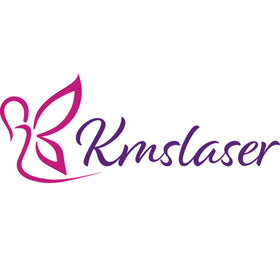Radial shockwave therapy is a state-of-the-art, noninvasive, highly effective treatment that increases circulation and speeds up the healing process, which causes damaged tissues to slowly re-form. RSWT has an established success rate equal or greater than that of conventional treatments including surgery, with no risks, complications, or long recovery periods. Radial extracorporeal shockwave therapy (rESWT) is used extensively for noninvasive treatments of a variety of diseases of the musculoskeletal system and other soft-tissue disorders . Because radial shock waves are not true shock waves in the strict physical sense , some authors refer to rESWT as radial pulse wave therapy (RPWT) or radial pulse treatment (RPT) .
The shockwave amplitude and sound field shape can be altered by interaction with different layers of tissue within the patients body or the setup used for in vitro experiments . Since 99 percent of the shockwave is reflected in every bubble in air, shockwave transducers must be coupled, e.g., to the patients body using an ultrasound gel.
The positive phase produces the direct mechanical force, while the negative phase produces cavitation and bubbles that later collapse at a higher rate, producing the second shockwave. Upon impact, the wave is generated, which propagates radially away from the injector, so that high energy and pressure are located right on the applicators surface. The spherical shockwave that spreads from the applicator results in the lower-intensity, radial-based primary wave, followed by the focussed F2 focused shockwave, which occurs by reflecting the spherical wave onto the semi-ellipsoidal, water-filled reflecting device.
In contrast, the maximum energy-point of a radial wave, sometimes called dispersive shockwave, is located at the tips of the apparatus (19). In contrast to focusing shockwave generators, which may generate shockwaves at least at their focus spot, radialshockwave generators generatenormal sound waves at pressures of up to 30 MPa, with a much higher peak duration of 3 us (Fig.
While the electrohydraulic generator produces shockwaves when exploding between the electrodes, the electromagnetic and piezoelectric sources produce an ordinary sound wave. The sound wave produced by the apparatus is non-audible, but sound waves affect the muscular tissues, cartilage, and bone lesions. Extracorporeal shockwaves used in medicine involve acoustic waves of energy traveling through tissue, releasing rapid rises and falls in pressure on tissue interfaces, known as a shockwave.
Focused shockwaves, the shockwaves used in the treatment of extracorporeal shockwave lithotripsy of urolithiasis, can be targeted at focus points at different tissue depths (10-12 cm) through utilizing reflections of the energy created by an acoustic wave source, such that waves are converging on the focus point to maximize energy, while limiting dispersion and collateral damage to neighboring tissues (17). Radial stress waves are dispersed by the source, as opposed to high-energy shockwaves which converge at a target, which results in lower power applied to the tissue compared with high-energy shockwaves. Low energy shockwaves travel at much slower speeds and do not penetrate sound barriers, hence no true shockwave is produced.
The reason why a Focused Shockwave Device is so effective is that the machine allows us to control and focus the shockwaves so that we can drive shockwaves across the outer erectile tissues of the penis with no consequences and no pain. The shockwave treatment devices produce low-frequency shockwaves at the infrasonic range that possess a unique penetrative quality. Shockwave therapy delivers low-intensity waves into the erectile tissues, and works to cure erectile dysfunction by encouraging the production of new blood vessels and clearing out plaque from the older ones.
Retrospective comparison of focused shockwave and radial wave therapy in men with erectile dysfunction. Figure 2 Mean changes in the Sexual Health Inventory in Men (SHIM) scores from pretest to post-treatment by focused shockwave therapy (fSWT) and radial wave therapy (rWT). Radial shockwave vs. ultrasound augmented body treatment for plantar fasciitis.
If you are only going to use a shockwave therapy machine at home, then Extracorporeal shockwave therapy machines to treat shoulder back and lumbar pain provide all of the bells and whistles that you could ever want. You might want to add shockwave treatment to your physical therapy practice for any number of reasons. Until recently, shockwave treatments were limited to specialized physiotherapists and physicians; however, with the introduction of devices you can use at home, shockwave treatment is now accessible to individuals.
The results of this review concluded that no one method is better than another; both radial and focused shockwave devices are excellent treatment options for various musculoskeletal conditions. I guess it does not matter much, as radial is just as effective as focused, and most clinics (including Burlington Sports Therapy) are using radial shockwave treatment devices.
This KMSLASER Shockwave Therapy Muscle Masseur for pain relief and E.D. treatment with 7 massage heads uses a super quiet compressor, so no one else nearby needs to disturb when using this.

